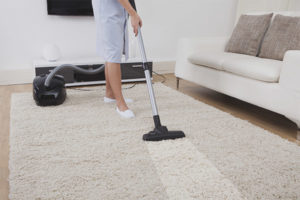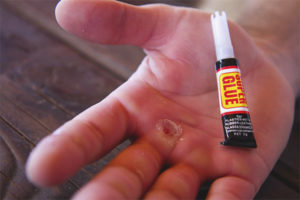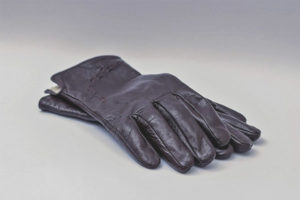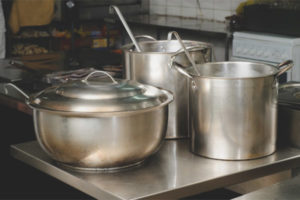The content of the article
Currently, most houses in Russia have windows and window sills made of plastic: they have a much longer service life declared by the manufacturer than classical ones, they easily cope with the effects of both elevated and low temperatures and have a fairly affordable price. However, in order to maintain their normal condition and extend the operating life, it is necessary to regularly clean both windows and window sills.
And if the windows are usually contaminated exclusively with dust and dirt, which can be easily removed with a normal damp cloth, then various smudges, spots, much more powerful layers of dirt can form on the windowsills, and even rust can appear in the corners.
Important: you can clean the plastic windowsill from everything, the main thing is to choose the right detergent, as some manufacturers give the structure a porous texture, others a rough texture, etc.
Full information about the proper care of any window sill is always collected in the manufacturer’s booklet, which is issued to the owner of the plastic structure upon purchase, therefore it is highly recommended not to immediately throw out the product passport. But, fortunately, there are many universal methods that can be used to clean all components from various kinds of pollution without harm.
Light pollution control
Important: especially described above for window sills (both plastic and made of other material) that are installed on the balcony. In autumn and spring, when in most regions of Russia the temperature constantly crosses the line at 0 degrees in either direction, the water freezes, expands, then heats up again, reducing its volume. This process leads to the fact that small cracks first appear in the windowsill, and then deeper ones.
Twice a month, it is recommended to use various solutions to clean the windowsill, which will help get rid of the presence of harmful components on its surface. So, perfect:
- Soap solution (it is necessary to part in a glass of 15-30 milliliters of soap and 150 ml of water).
- A mixture of washing powder and water (importantly, not a suspension, but a homogeneous system). It is enough to use 5-8 grams of powder in the same 150 ml of water.
- A solution of soda, for the preparation of which 20-30 grams of soda powder and 200 ml of water are required. It will perfectly cope with all contaminations, while being not an aggressive chemical reagent and, as a result, without harming the plastic windowsill.
If it is necessary to remove stagnant dirt from any gap or crack, then it is possible to slightly increase the concentration of the solid component in one of the described solutions in order to obtain a kind of paste.This mixture should be applied either to an old toothbrush or to a toothpick, after which carefully remove dirt first and then clean the hole.
Removing stains, rust
If the above solutions and pastes do not help get rid of yellow-brown spots or, at all, rust, then various special chemicals sold in any modern supermarket can help with this. Their choice is quite large, but they differ somewhat in their intended purpose, therefore, when buying, you should rely on the type of pollution that needs to be removed.
According to statistics, the most popular and best-selling in this field of household chemicals is the universal remedy “Mr. Proper ”, which is also suitable for cleaning plastic and metal surfaces (if a metal-plastic construction is installed). Using it is quite simple: you just need to distribute the solution evenly with a spray on the windowsill, rub it in a circular motion with a rag and wipe it dry after that.
Important: in no case should the last step be skipped, because otherwise the particles of both the powder and the gel will be a kind of magnet for dust.
An alternative to the described solution are Cillit Bang, Pemolux, and Domestos. They differ among themselves only in the strength of the effect (in a row they are listed in descending order) and in composition, therefore it is necessary to look if a particular window sill has a fear of certain components.
Removing rust from a plastic window sill is somewhat more difficult, for this you will need a composition tool that is dramatically different from the composition of the tools listed above. The most effective, according to numerous reviews on the forums, is Cosmofen 10, which contains a small amount of toxic substance (in small doses its content in the air is harmless to humans, however, doctors are not recommended to stay in such an environment for long). There are several requirements for its use:
- It is necessary to work only with plastic gloves or gloves, which should completely cover the brush, wrist and surface of the arm to the elbow.
- It is mandatory to wear a respirator.
- Since the product is toxic, remove all pets and children from the room where the window sill damaged by rust is installed.
Using Cosmofen 10 is quite simple: just put a small amount on a rag (in this case, it is advisable to use a hard one, then a soft one for washing), and then treat the place of damage. It is necessary to distribute the product as best as possible on the surface of the rust, so that subsequently it is not difficult to remove it.
At the end of the work, it is mandatory to:
- Flush the damaged area with a very large amount of water (at least two liters).
- After that, treat the place with a soap solution, finally removing some randomly remaining particles.
- Dry wipe the damaged area with a rag (if there is a crack, then you can remove water from there with a cotton swab or a disk attached to a toothpick).
Work with this tool should be very careful, observing all prescribed instructions; It is important to prevent direct skin and solution contact. If it did occur, the place must be treated with running water, then with hydrogen peroxide in order to eliminate the risks of serious damage to the skin.
Fighting primers and other mortars
Repair work always entails the appearance of a sufficiently large amount of construction debris, and the numerous solutions used can cause the appearance of a hard to remove stain or even a powerful layer of primer.
Note: the primer is the most difficult to clean type of pollution, because all the methods described below are applicable to other hardened mortars.
Since it always plays the role of a kind of bonding layer, removing it from any surface for which it is not intended is a very difficult task. It is for this reason that builders and repair crews always tape over all places of possible contact with tape, and newspapers are additionally placed on top. This helps to avoid unnecessary removal problems and allows you to work quietly at a normal pace.
If, however, the primer still remains on the plastic windowsill, then it is best to remove it instantly with an ordinary wet rag. A quality type of primer is enough for fifteen minutes to gain its maximum strength, after which it will be very difficult to remove it.
An abundant amount of soda can also help to decompose the hardened substance by wetting it, which should be distributed in a layer of 1-2 mm over the entire surface of the primer. It is necessary to give an hour or two to the substances for interaction, after which, using a scraper or ordinary spatula, remove the primer from the windowsill.
You can also use vinegar for its decomposition (however, not the one that is used in cooking, but at the highest concentration). Since its solution is quite toxic, again it is necessary to use a respirator and other protective equipment.
Tip: when using vinegar, you can first use several rags soaked in a solution. They should be spread over the entire surface of the contamination. Vinegar will have a delaminating effect, and it will be much easier to remove the primer after an hour.
Plastic window sill care
In order not to have to deal every six months with a serious layer of dirt, spreading spots and a lot of dust, it is necessary to pay attention to the windowsill as well during weekly cleaning of the living room. Since it is quite resistant to various substances, just wipe it clean with a melamine sponge and a normal soap solution.
Once or twice a month, you can use tools that are usually used to clean glass and mirrors. They have a non-aggressive chemical composition and will positively affect the general condition of the plastic window sill. Once every six months it is recommended to clean literally every corner of the windowsill with a toothpick and vinegar.
It is imperative to carry out the described procedures on the inside of the structure (facing the floor), since it is there, in most cases, that the crack begins.
Video: how to wash a plastic windowsill












Submit